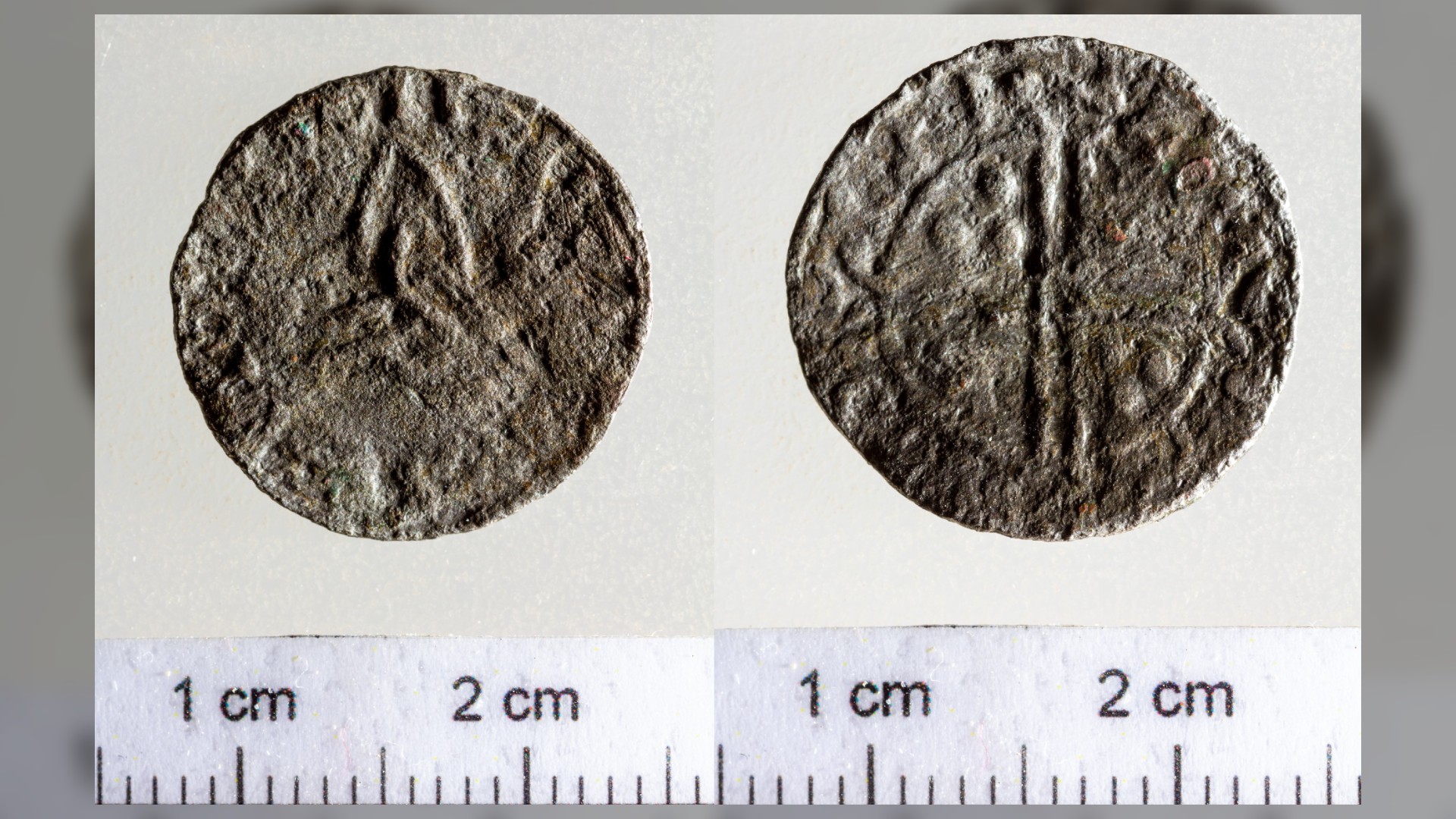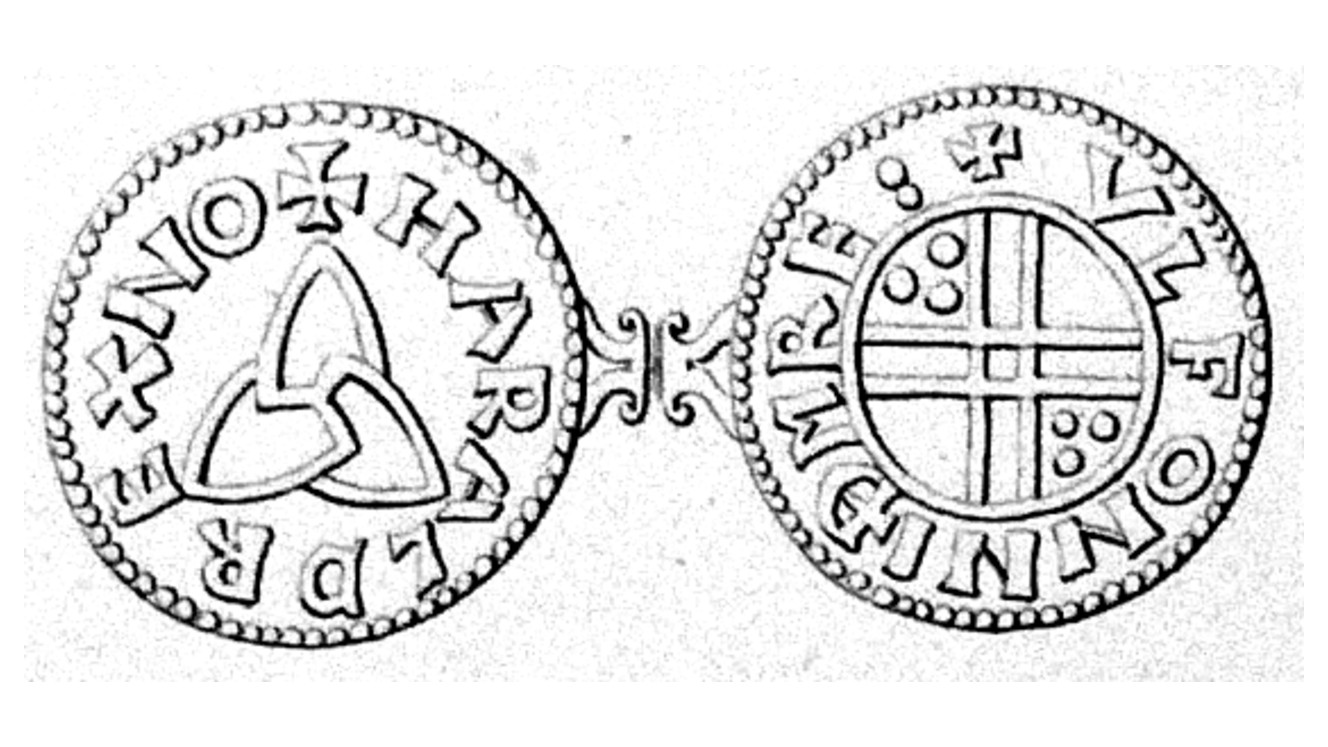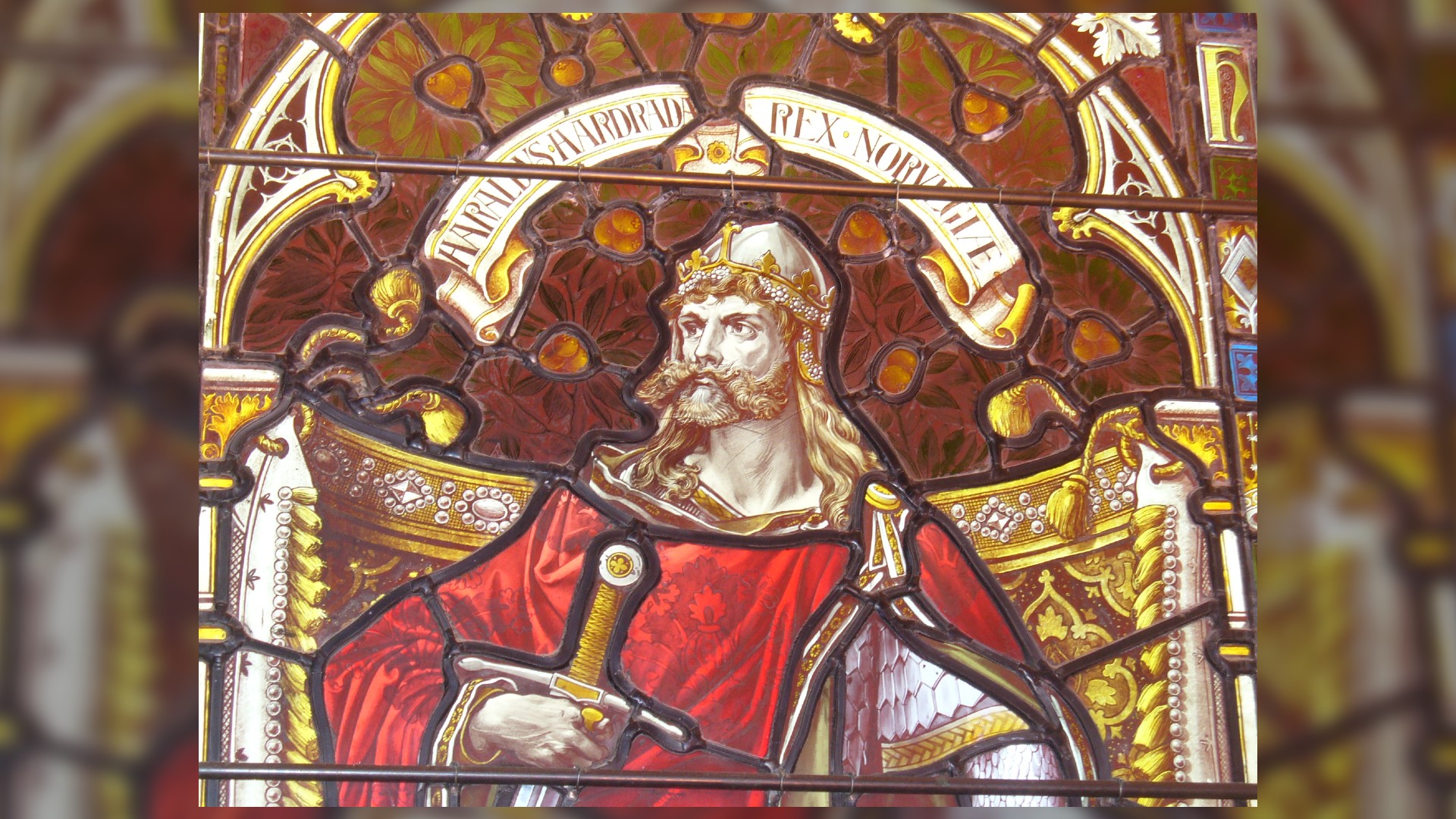Silver coin featuring famous Viking king unearthed in Hungary
A metal detectorist in Hungary has unearthed a tiny silver coin marked with the name of a famous Viking king that was lost almost 1,000 years ago.

A metal detectorist has discovered a small silver coin marked with the name of a famous Viking king. However, it was unearthed not in Scandinavia, but in southern Hungary, where it was lost almost 1,000 years ago.
The find has baffled archaeologists, who have struggled to explain how the coin might have ended up there — it's even possible that it arrived with the traveling court of a medieval Hungarian king.
The early Norwegian coin, denominated as a "penning," was not especially valuable at the time, even though it's made from silver, and was worth the equivalent of around $20 in today's money.
"This penning was equivalent to the denar used in Hungary at the time," Máté Varga, an archaeologist at the Rippl-Rónai Museum in the southern Hungarian city of Kaposvár and a doctoral student at Hungary's University of Szeged, told Live Science in an email. "It was not worth much — perhaps enough to feed a family for a day."
Related: Rare gold coin found in Hungary shows assassinated Roman emperor
Metal detectorist Zoltán Csikós found the silver coin earlier this year at an archaeological site on the outskirts of the village of Várdomb, and handed it over to archaeologist András Németh at the Wosinsky Mór County Museum in the nearby city of Szekszárd.
The Várdomb site holds the remains of the medieval settlement of Kesztölc, one of the most important trading towns in the region at that time. Archaeologists have made hundreds of finds there, including dress ornaments and coins, Varga said.
Get the world’s most fascinating discoveries delivered straight to your inbox.
There is considerable evidence of contact between medieval Hungary and Scandinavia, including Scandinavian artifacts found in Hungary and Hungarian artifacts found in Scandinavia that could have been brought there by trade or traveling craftsmen, Varga said.
But this is the first time a Scandinavian coin has been found in Hungary, he said.
Who was Harald Hardrada?
The coin found at the Várdomb site is in poor condition, but it's recognizable as a Norwegian penning minted between 1046 and 1066 for King Harald Sigurdsson III — also known as Harald Hardrada — at Nidarnes or Nidaros, a medieval mint at Trondheim in central Norway.
The description of a similar coin notes that the front features the name of the king "HARALD REX NO" — meaning Harald, king of Norway — and is decorated with a "triquetra," a three-sided symbol representing Christianity's Holy Trinity.
The other side is marked with a Christian cross in double lines, two ornamental sets of dots, and another inscription naming the master of the mint at Nidarnes.
Harald Hardrada ("Hardrada" translates as "hard ruler" in Norwegian) was the son of a Norwegian chief and half-brother to the Norwegian king Olaf II, according to Britannica. He lived at the end of the Viking Age, and is sometimes considered the last of the great Viking warrior-kings.
Traditional stories record that Harald fought alongside his half-brother at the Battle of Stiklestad in 1030, where Olaf was defeated and killed by the forces of an alliance between Norwegian rebels and the Danish; Harald fled in exile after that, first to Russia and then to the Byzantine Empire, where he became a prominent military leader.
He returned to Norway in 1045 and became its joint king with his nephew, Magnus I Olafsson; and he became the sole king when Magnus died in battle against Denmark in 1047.
Harald then spent many years trying to obtain the Danish throne, and in 1066 he attempted to conquer England by allying with the rebel forces of Tostig Godwinson, who was trying to take the kingdom from his brother, King Harold Godwinson.
Related: 2,000-year-old Celtic hoard of gold 'rainbow cups' discovered in Germany
But both Harald and Tostig were killed by Harold Godwinson's forces at the Battle of Stamford Bridge in northern England in 1066; whereupon the victor and his armies had to cross the country in just a few weeks before the Battle of Hastings against William of Normandy — which Harold Godwinson lost, and with it the kingdom of England.
Medieval travels
The penning found at Várdomb could have been lost more than 100 years after it was minted, but it's more likely that it was in circulation for between 10 and 20 years, Varga and Németh said.
That dating gives rise to a possible connection with a medieval Hungarian king named Solomon, who ruled from 1063 to 1087.
According to a medieval Hungarian illuminated manuscript known as the "Képes Krónika" (or "Chronicon Pictum" in Latin), Solomon and his retinue (a group of advisors and important people) encamped in 1074 "above the place called Kesztölc" — and so the archaeologists think one of Solomon's courtiers at that time may have carried, and then lost, the exotic coin.
"The king's court could have included people from all over the world, whether diplomatic or military leaders, who could have had such coins," Varga and Németh said in a statement.
Another possibility is that the silver coin was brought to medieval Kesztölc by a common traveler: the trading town "was crossed by a major road with international traffic, the predecessor of which was a road built in Roman times along the Danube," the researchers said in the statement.
"This road was used not only by kings, but also by merchants, pilgrims, and soldiers from far away, any of whom could have lost the rare silver coin," they wrote.
Further research could clarify the origins of the coin and its connection with the site; while no excavations are planned, Varga said, field surveys and further metal detection will be carried out at the site in the future.
Originally published on Live Science.
Tom Metcalfe is a freelance journalist and regular Live Science contributor who is based in London in the United Kingdom. Tom writes mainly about science, space, archaeology, the Earth and the oceans. He has also written for the BBC, NBC News, National Geographic, Scientific American, Air & Space, and many others.




